This post may contain affiliate links. Please read our disclosure policy.
Two simple methods for homemade chickpea flour (garbanzo bean flour) – an excellent gluten-free flour option for a wide variety of your baking needs.
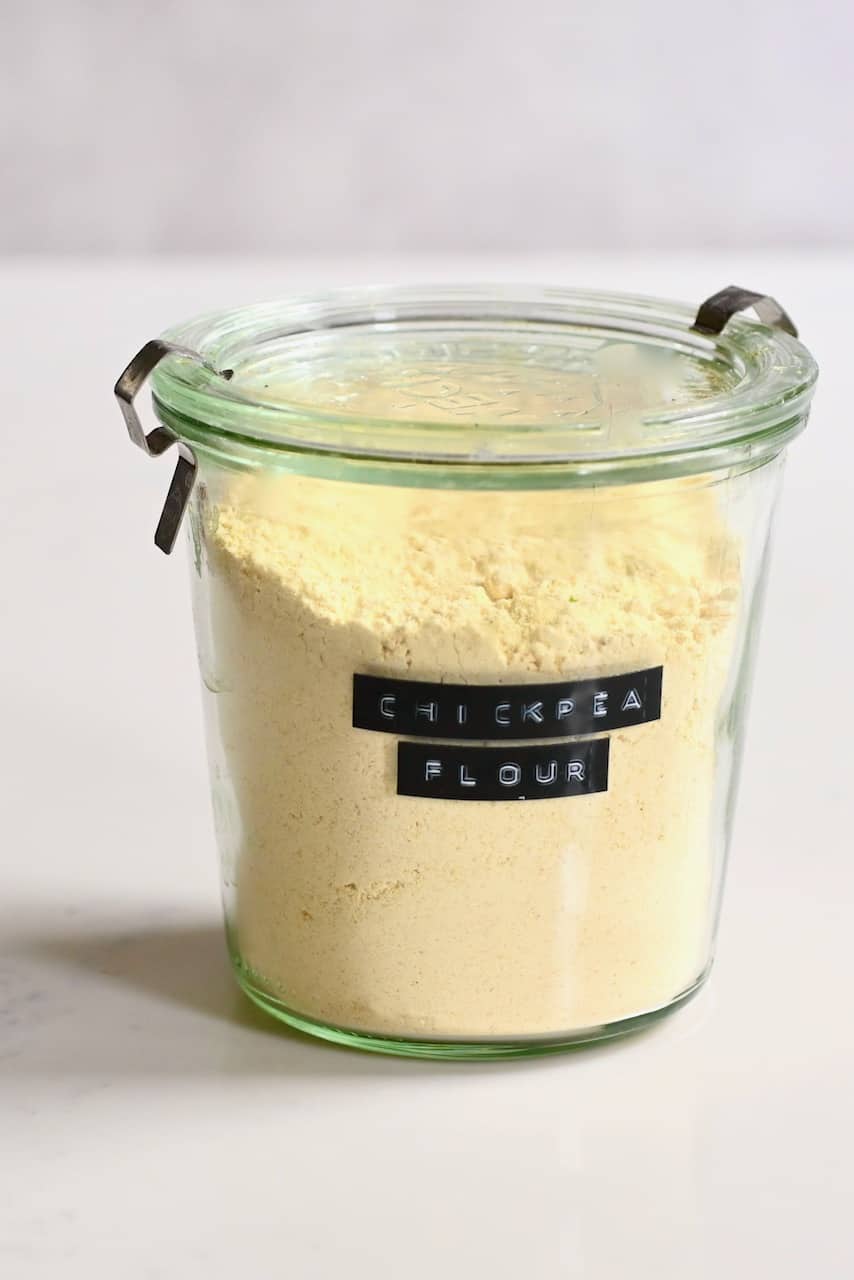
It may seem like I’m a bit chickpea obsessed, especially if you’ve noticed that my number of chickpea-related recipes and DIYs is going up every single week. What can I say, I love this ingredient! Learning how to make chickpea flour is incredibly simple, and it can then be used for your delicious gluten-free baked goods and a variety of comfort foods.
I’ve mentioned homemade flour recipes in previous posts, such as oat flour, almond flour, etc. These are all super simple to make at home. Along with hundreds of other ‘ingredients’ that you may have never thought even to try to make: yogurt (homemade yogurt, coconut yogurt, almond yogurt), cheese (Cream Cheese, Vegan Feta, Vegan Mozzarella, and vegan cheddar). Even staples like dairy-free milks, nut & seed butters, and tofu (two ways!).
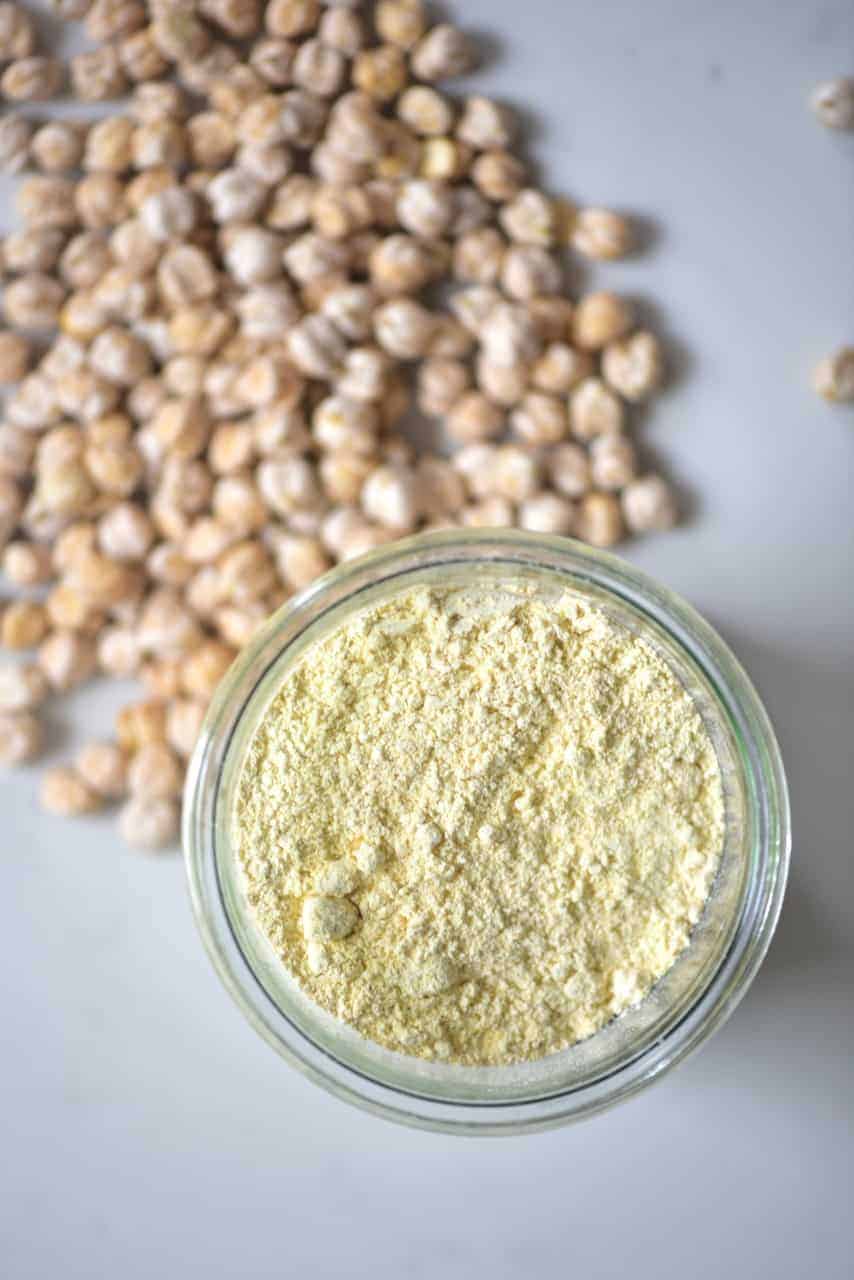
It’s wonderful learning to make things from scratch and knowing that you have that knowledge forever more. It also makes you appreciate the food that you’re putting into your body even more – knowing that you have made these ingredients personally.
In fact, this post contains TWO methods for making homemade chickpea flour: one with dried chickpeas and, my preferred method, using soaked and then dried chickpeas. I’ll explain why below.
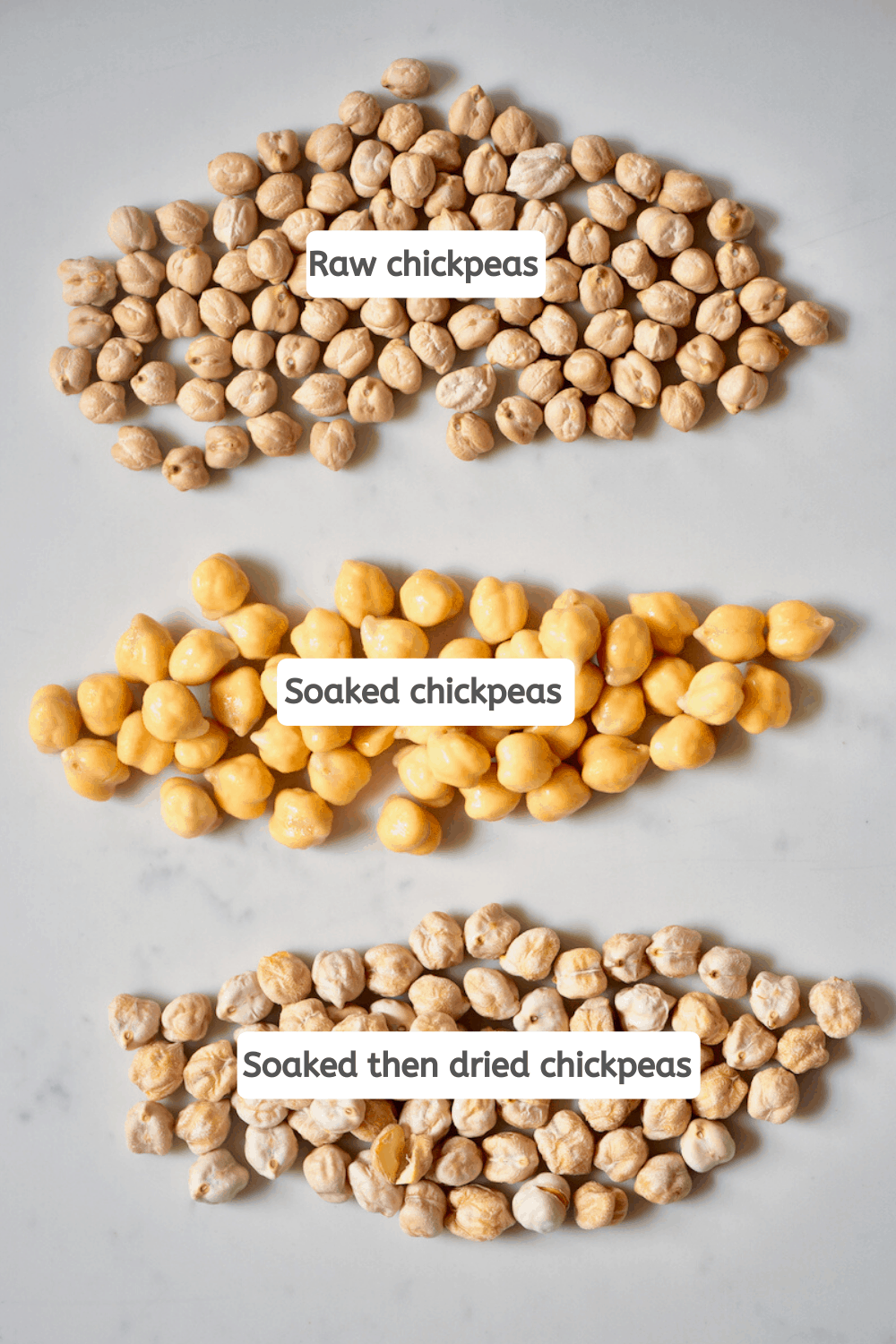
Want to save this recipe?
Table of Contents
Notes
- Gluten-free flours often need slightly different amounts within a recipe. For example, substitute 1 cup of regular flour for 3/4 cup of chickpea flour.
- I know some will ask why we don’t use cooked beans for this. Because we will cook the flour in whatever recipe it’s used in, the chickpeas don’t need to be pre-cooked.
- I’ll often soak enough chickpeas so I can use some for chickpea flour (gram flour) and will then cook some and freeze them for meals (saving the cooking liquid to use as aquafaba).
- Below is an image of dried chickpeas (store-bought), rehydrated (soaked) chickpeas, and dehydrated chickpeas. It’s best to label your containers of the store-bought dried and dehydrated, so they’re not mixed up.
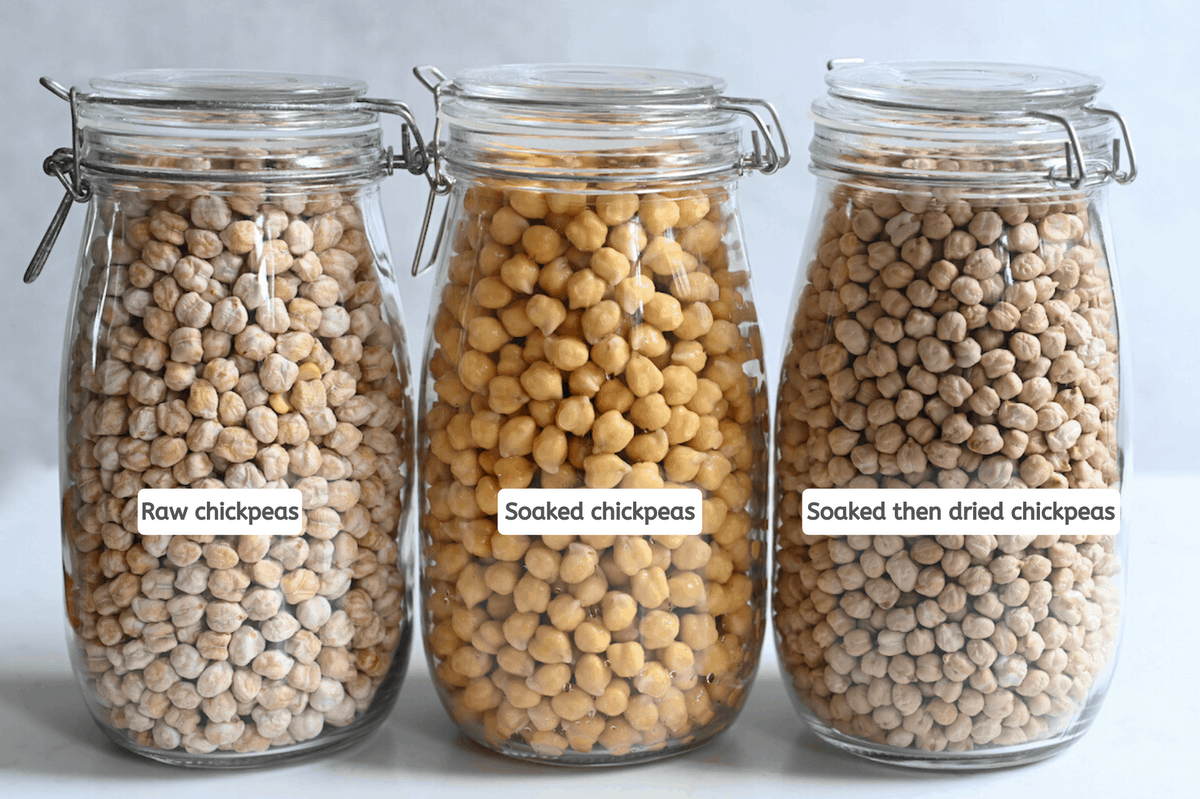
How to make chickpea flour
Needed:
- Dried chickpeas
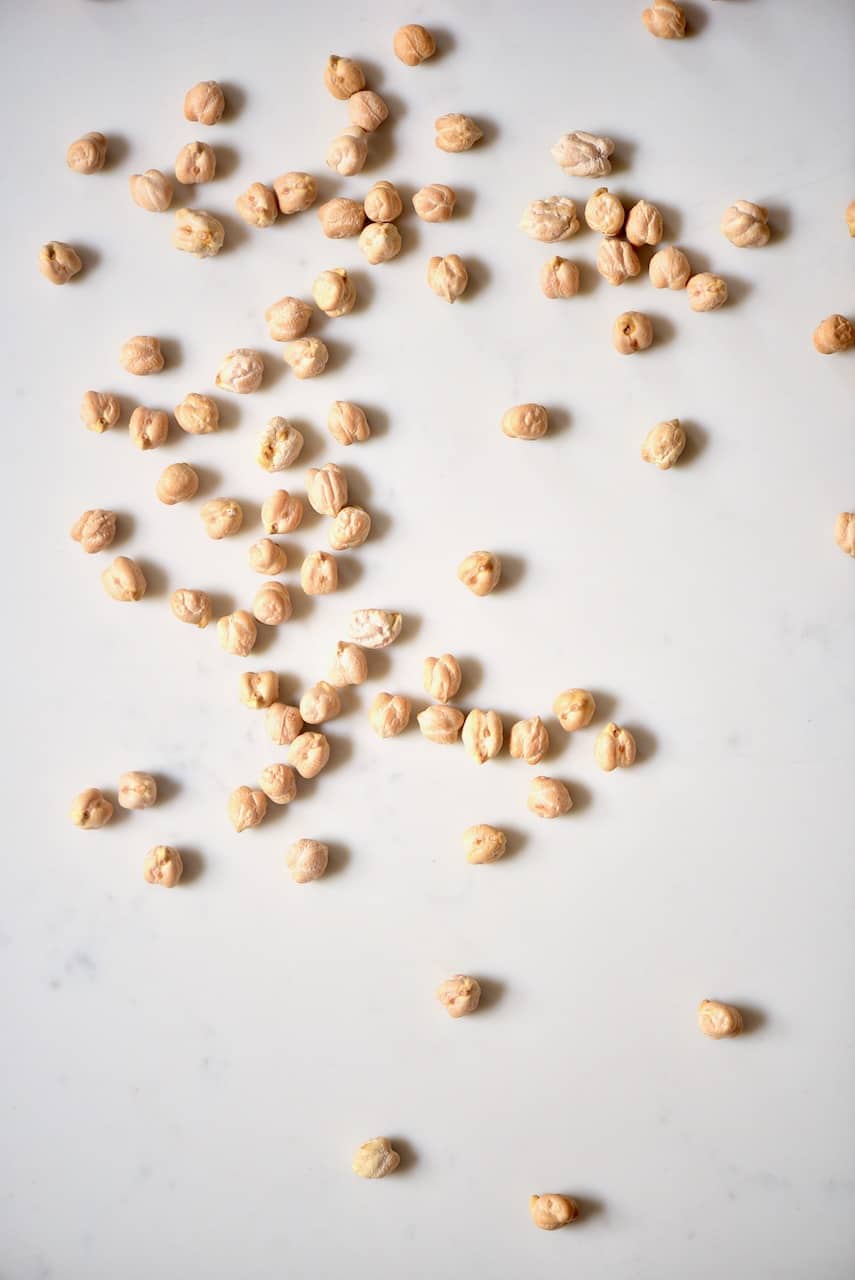
The two methods
Option 1:
A lot of people directly grind the store-bought dried chickpeas into flour. I am not a big fan of this option since the chickpeas usually are never washed before packaging and could be sprayed with nasty chemicals to prolong their shelf life. Now I know that cooking will remove/kill the germs, but I’d rather they not to be present before processing the chickpeas into flour.
However, if you’re buying organic chickpeas that aren’t sprayed with any pesticide, etc., then this method is a super-quick ‘instant’ chickpea flour.
Simple, place your chickpeas in a coffee/spice grinder or high-speed blender, and grind them into a fine powder.
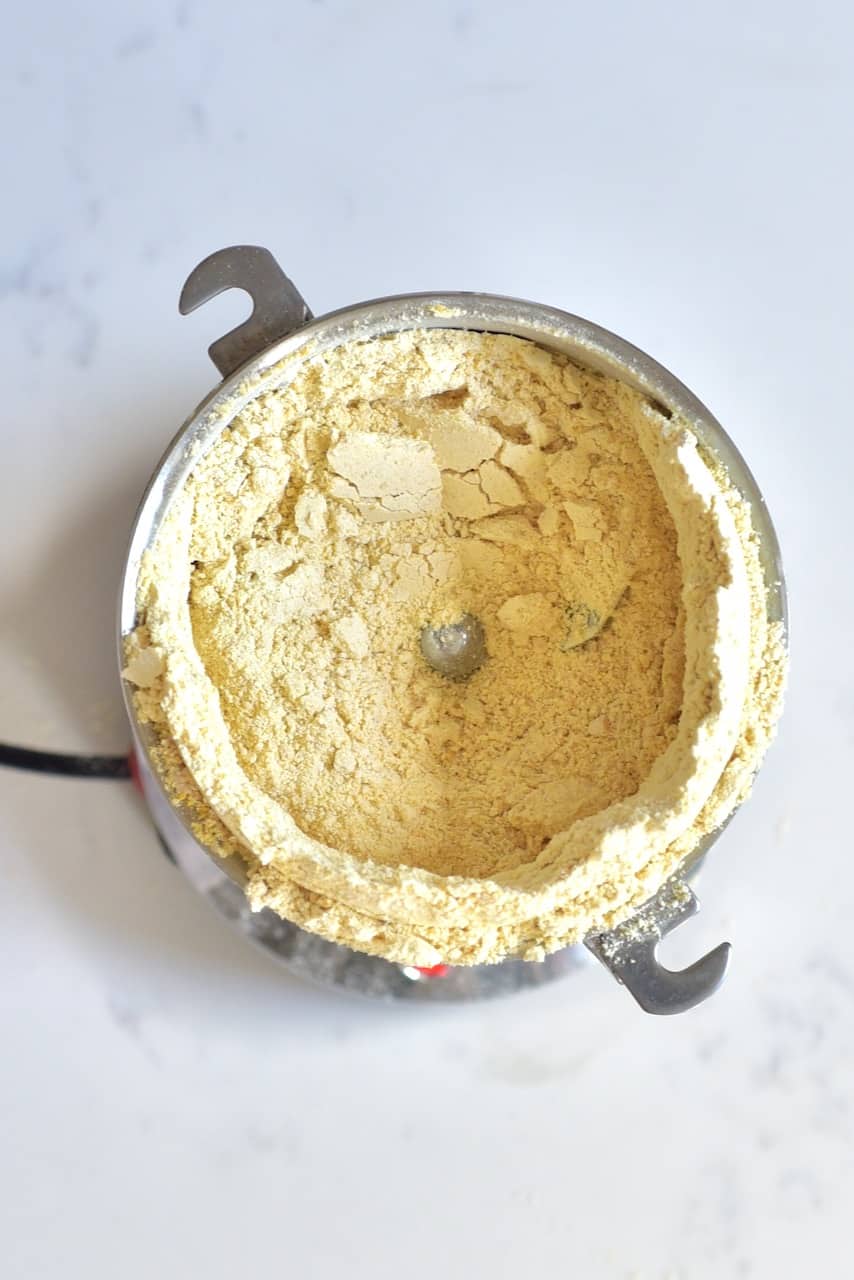
Sieve the flour, to remove any larger lumps, and then you can re-grind these too.
Once ready, store your chickpea flour in an airtight container for up to two months.

Option 2 (my preferred method):
This option is a longer process (although the actual hands-on time is near-identical), making sure that the chickpeas are cleaned and soaked, before being dried and ground into flour. This will make sure there’s no pesticide/nasty residue on the chickpeas and soaking is also said to increase their nutritional value and are easier digested.
For this method, first, rinse your dried chickpeas.
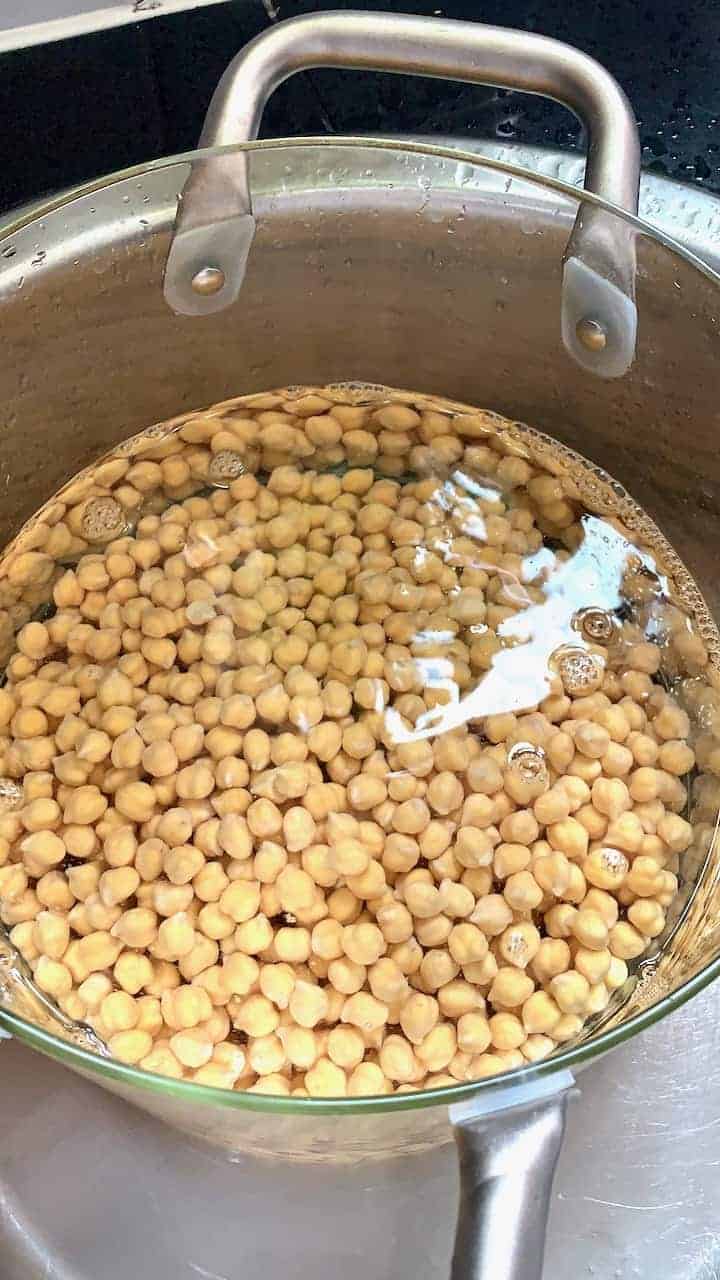
Then, soak them overnight (minimum of 8 hours, and you can go up to 24 hours). Make sure to cover them with enough water (usually a few inches of water above the chickpeas) as they will expand 2-3 times their size.
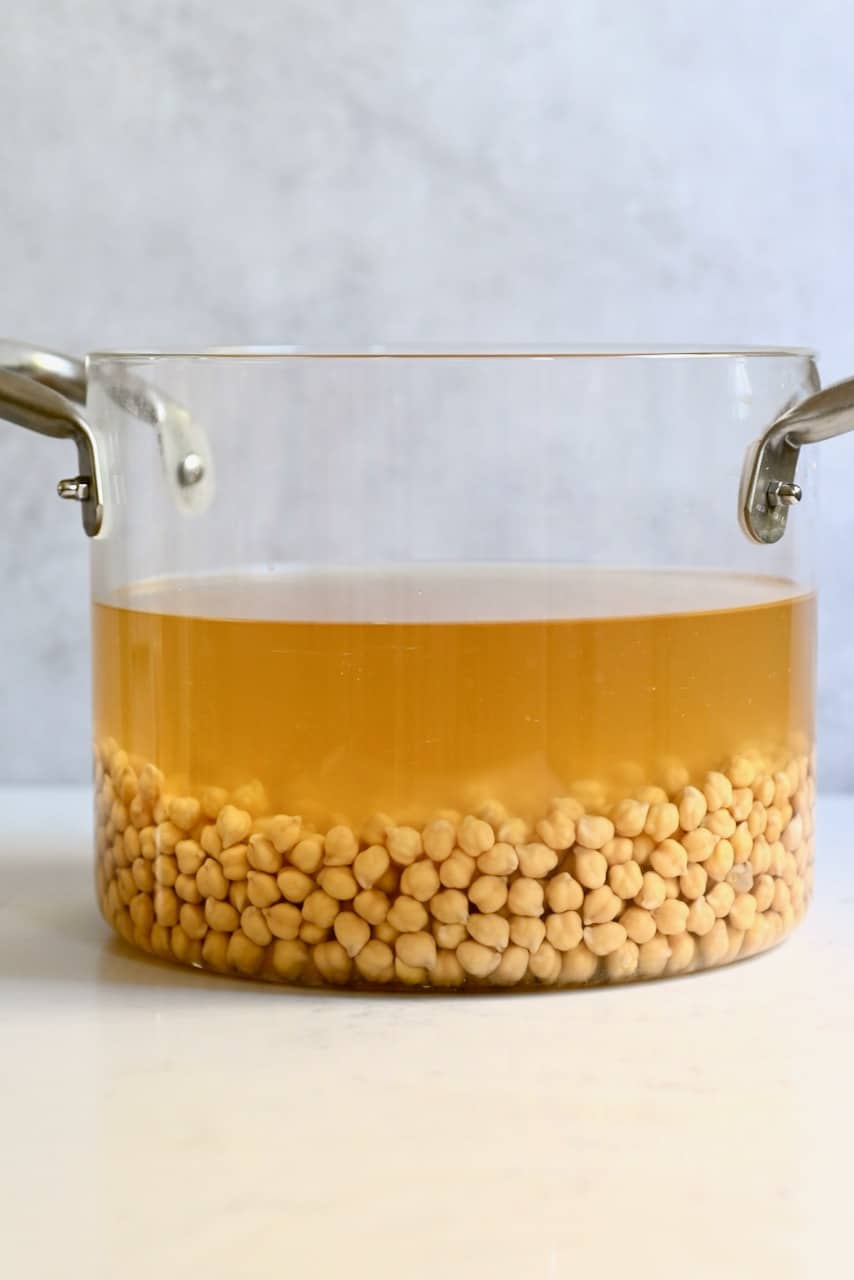
Once soaked, drain the water (or use it to water your plants) and pat them dry thoroughly.
Note* I’ll often soak enough chickpeas to make some flour as well as cook and freeze some for later dishes. You can see the full guide on how to cook dried chickpeas (as well as prep, freeze and even store the cooking liquid to use as aquafaba).
Now we need to dry (dehydrate) the chickpeas. Place them on a large tray (a baking sheet or dehydrator tray will work). Make sure to place them in a single layer (not overlapping at all); otherwise, the drying process can take far longer.
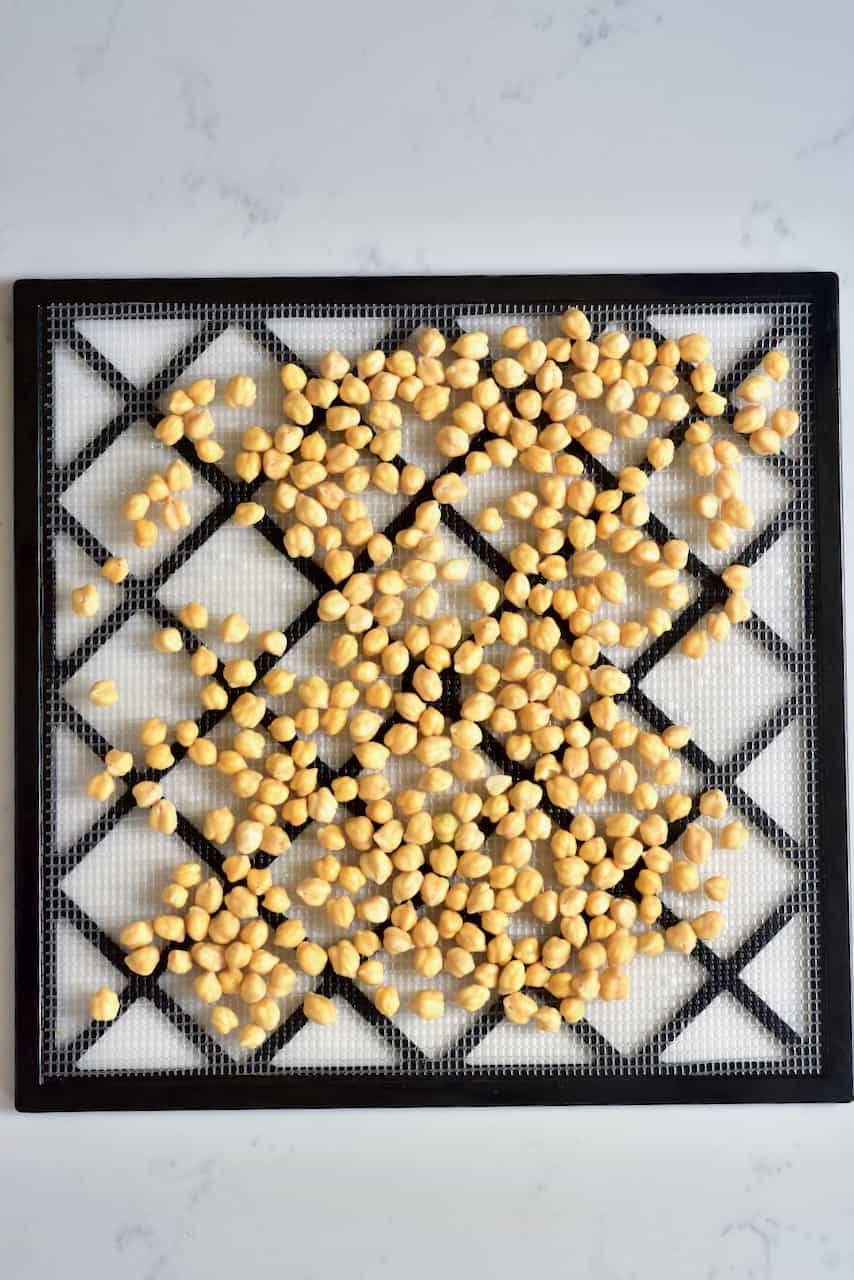
You can let them dry out in a sunny warm spot or dry them in the dehydrator or oven at 50ºC for 12 hours.
I dried mine in a dehydrator, just because it’s far quicker than letting them air out.
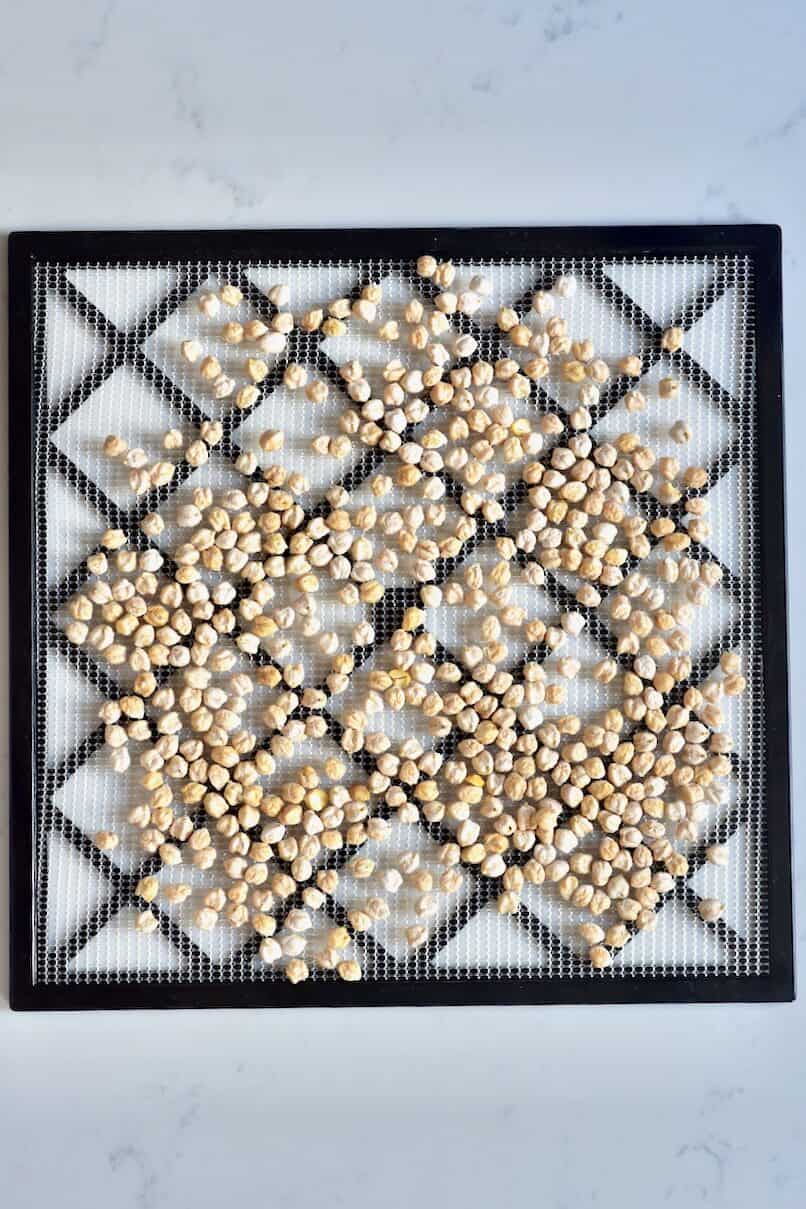
The chickpeas need to be completely dry before we grind them. Otherwise, they will be mushy, and you’ll end up with a mash and not a fine powder.
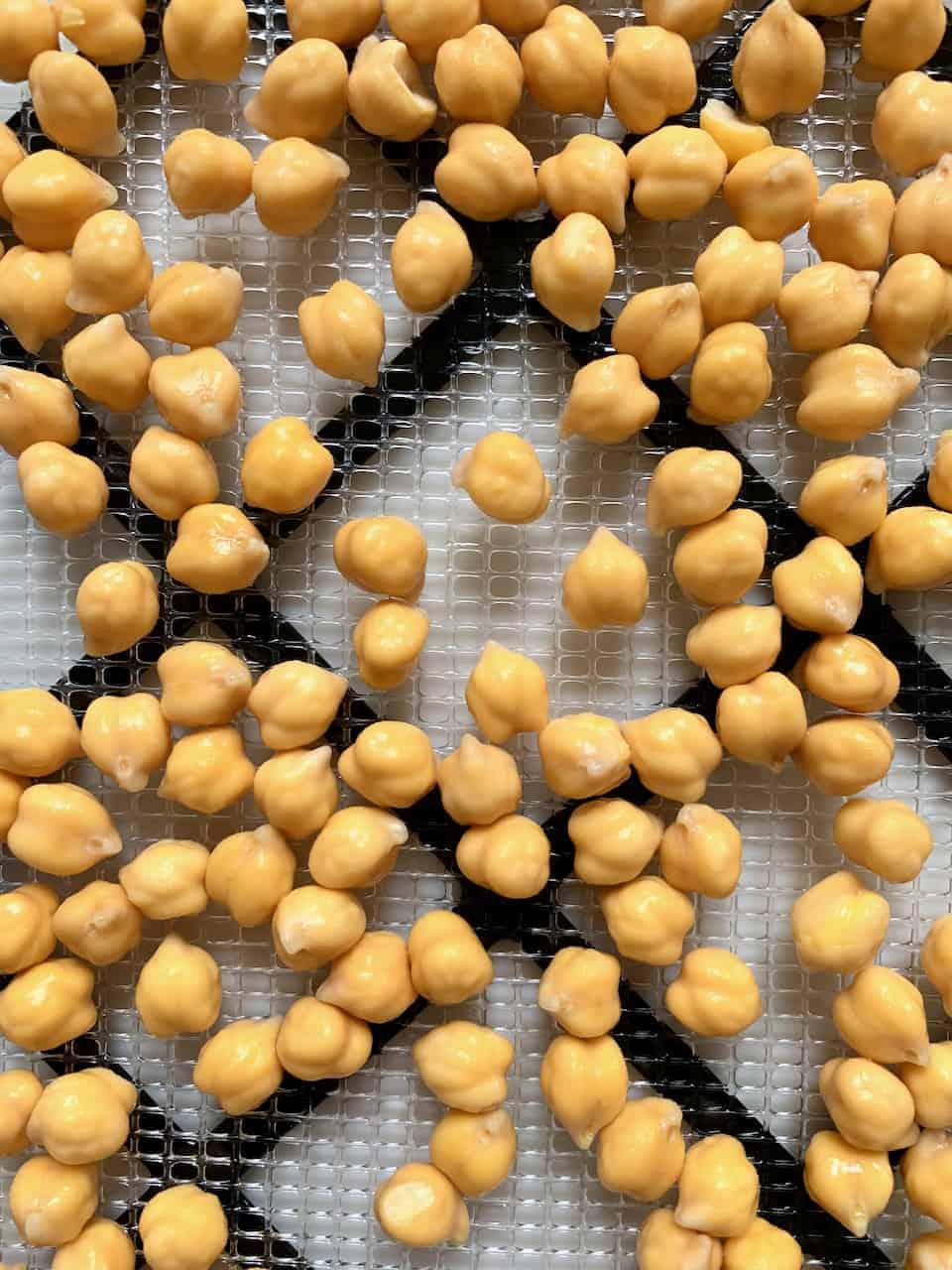
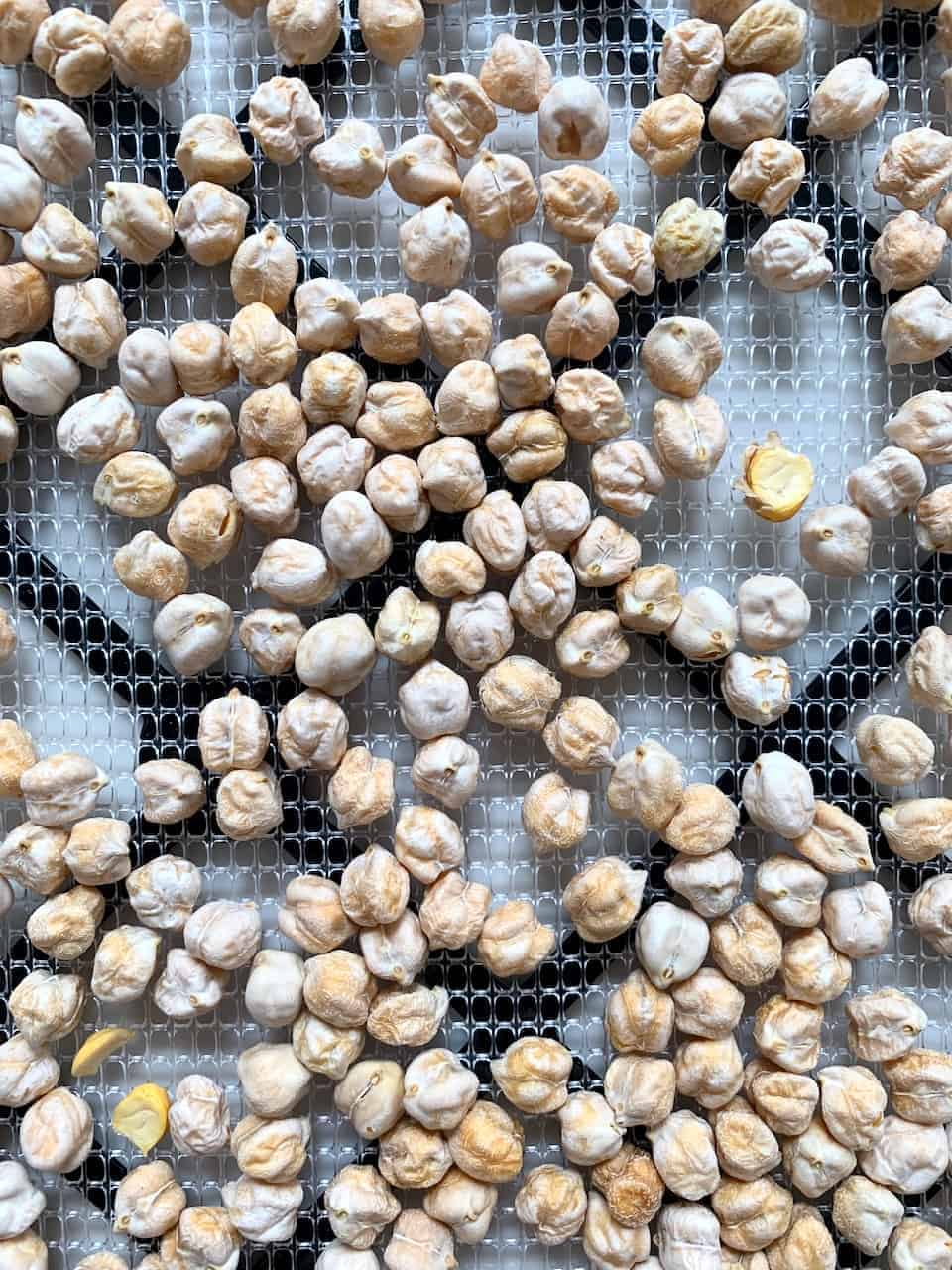
When the chickpeas are completely dry, grind them.
You can blend them in a high-speed food processor/blender or grind them to a fine flour in a spice grinder.
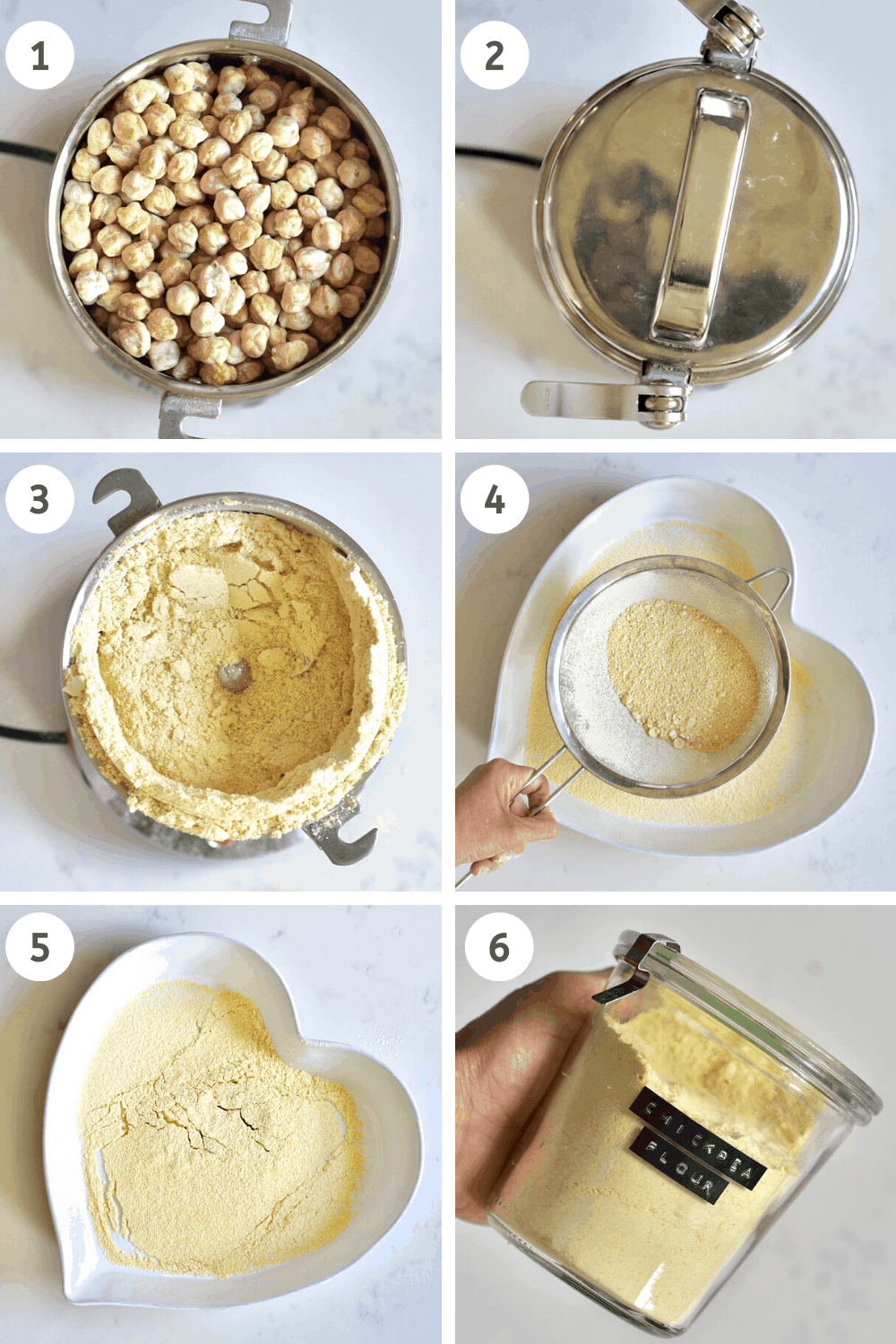
Sieve the flour to remove any lumps. Then, you can try grinding the larger particles again. If using a grinder, you’ll need to do this 2-3 tBsp at a time. Either method may require a few passes for all the chickpeas to become finely ground.
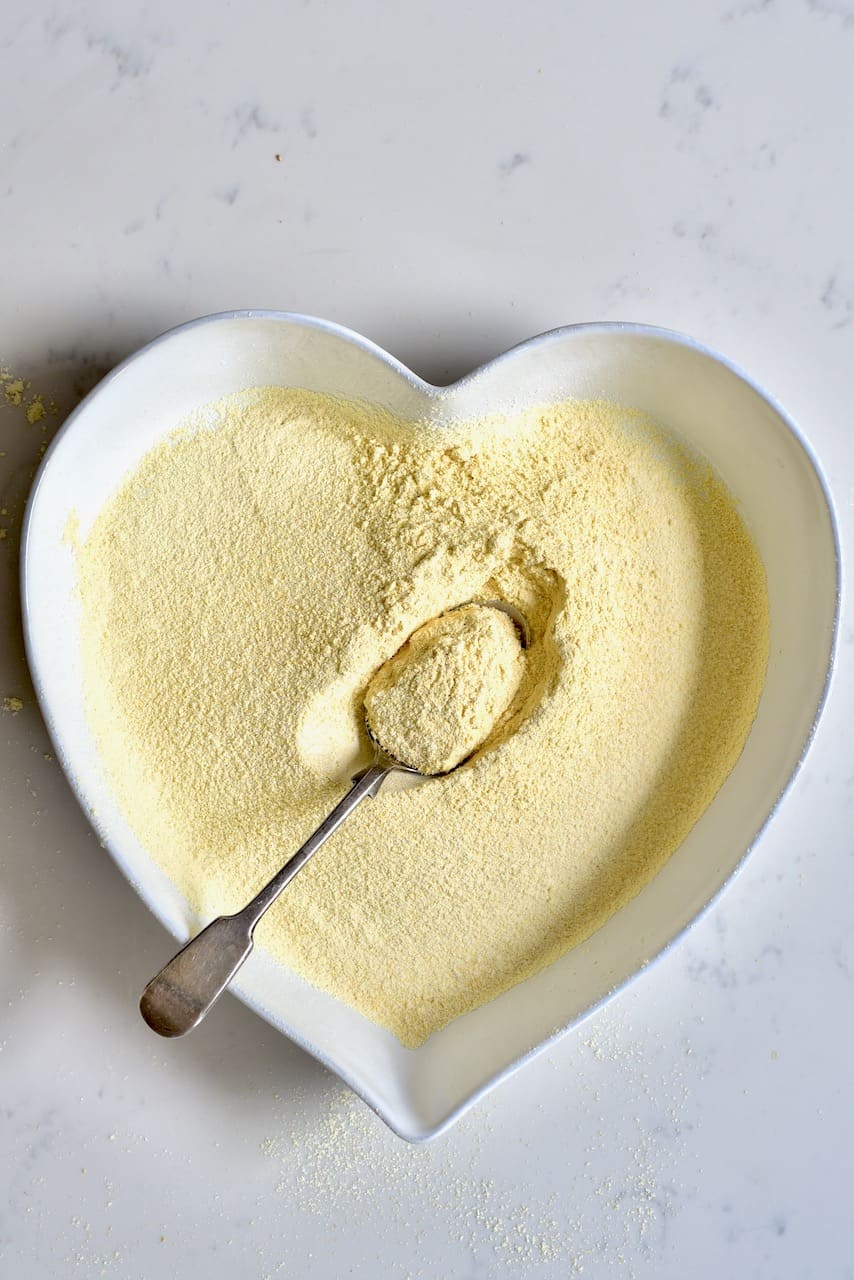
Once ready, transfer to an airtight jar of your choosing and store for up to two months.

Chickpea flour recipes and uses
There are tons of ways to use your freshly made chickpea flour, from using it to thicken up sauces and curries to an easy gluten-free flour swap.
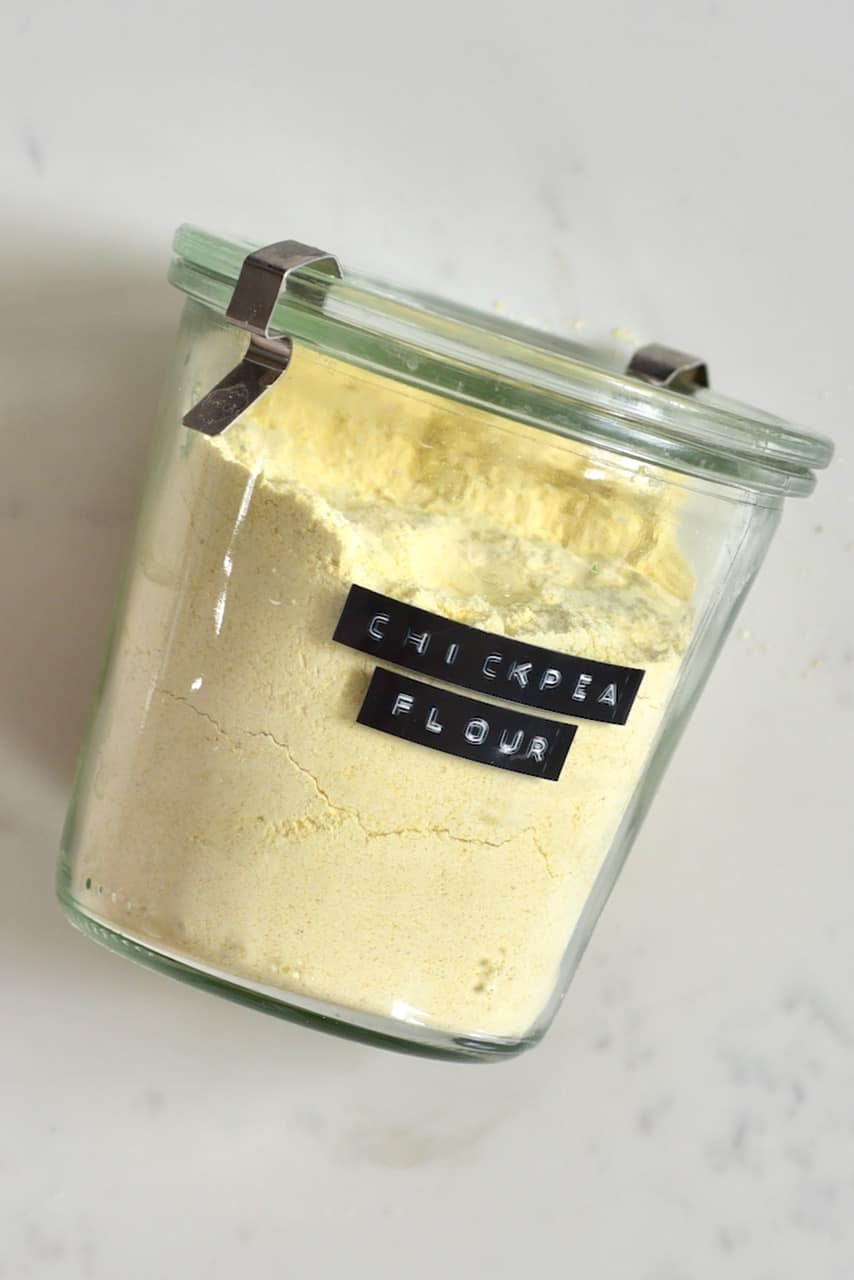
Chickpea flour (gram flour) can also be used as a great binding agent (for fritters, veggie burgers, etc.) and is well-known for making pancake/crepe-like flatbreads (called Socca in France and Farinata in Italy). As well as other ‘bread’ – like tortillas, taco shells, etc.
But it can be used for so many recipe types: omelets, bread, cake, cookies, pizza, etc.
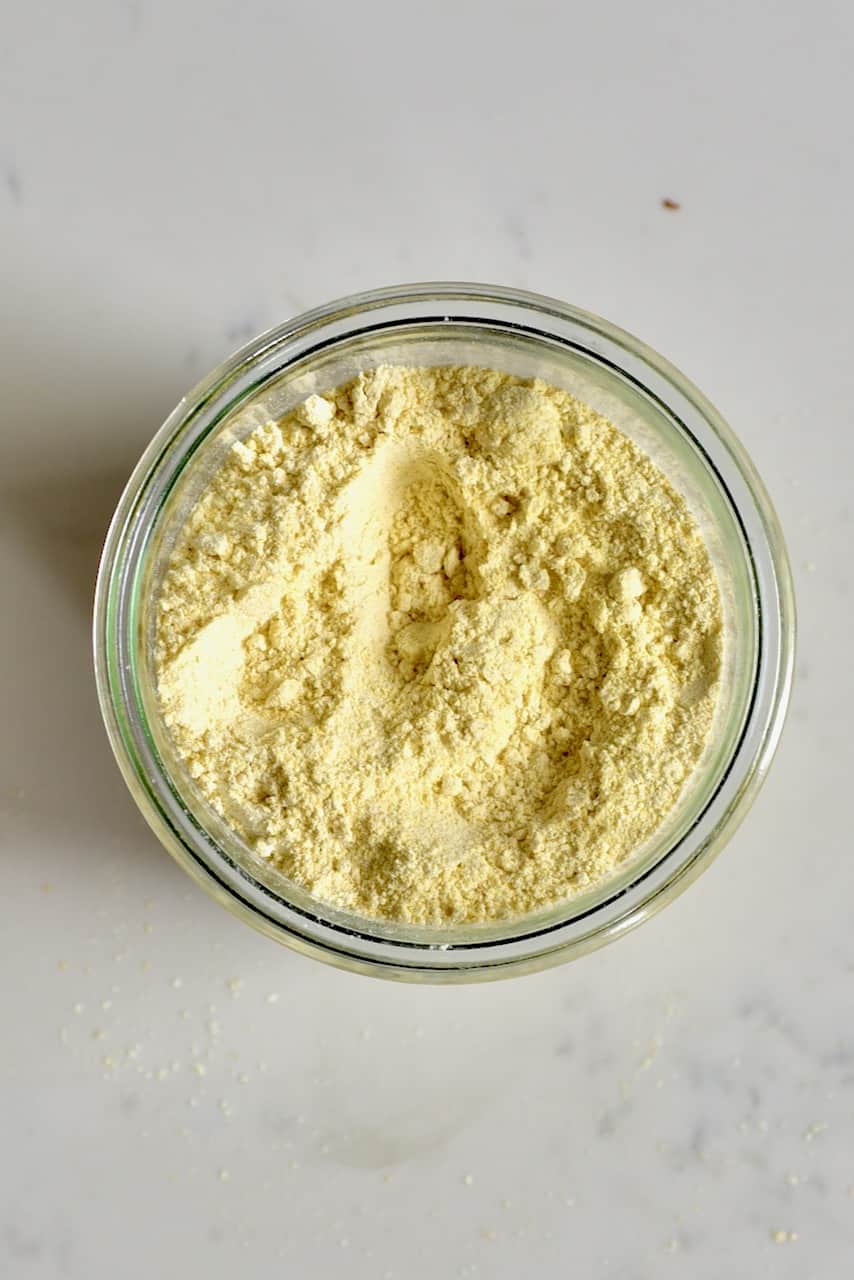
If you have any questions, feel free to ask them in the comments. You can also tag me in your recreations on Instagram @Alphafoodie.
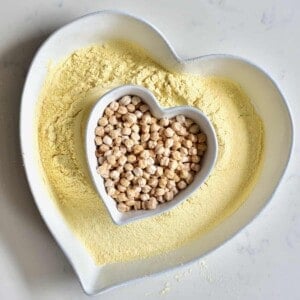
How To Make Chickpea Flour
Equipment
- Pot
- Oven or dehydrator
- Airtight jar for storing
Ingredients
- chickpeas
Instructions
Option 1
- Directly blend the dried chickpeas in a high-speed food processor/blender or grind them in a spice grinder.

- Sieve the flour to remove any lumps. Then try grinding the larger particles again.Store in an airtight container for up to 2 months.

Option 2 (my preferred method)
- First, soak the chickpeas overnight (minimum of 8 hours, and you can go up to 24 hours). Make sure to cover them with enough water as they will expand 2-3 times their size.

- Drain the water (you can use this to water plants) and rinse well the soaked beans. Then, pat them dry as much as you can.

- Dry the chickpeas in a sunny warm spot or alternatively, dry them in the dehydrator or oven at 50ºC for 12 hours.Lay them out in single layers across baking sheets (or the dehydrator trays), for the quickest dry time.

- When the chickpeas are completely dry, grind them. If they're not completely dry then you'll end up with a 'paste' rather than flour- so be patient. You can blend them in a high-speed food processor/blender or grind them to a fine flour in a spice grinder.

- Sieve the flour to remove any lumps. Then, you can try grinding the larger particles again. This may take a few passes to all become fully ground.

- Store in an airtight container for up to 2 months.

Video
Notes
- Gluten-free flours often need slightly different amounts within a recipe. For example, substitute 1 cup regular flour for 3/4 cup chickpea flour
- I know some will ask why we don’t use cooked beans for this. Because we will cook the flour in whatever recipe it’s used in, the chickpeas don’t need to be pre-cooked.
- I’ll often soak enough chickpeas so I can use some for chickpea flour (gram flour) and will then cook some and freeze them for meals (saving the cooking liquid to use as aquafaba).

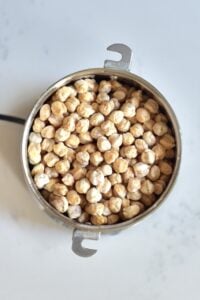
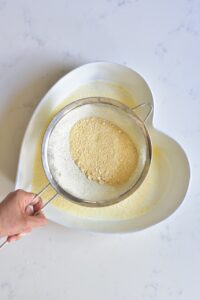
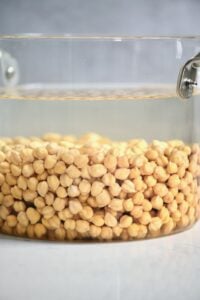
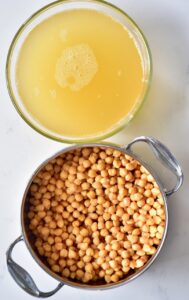
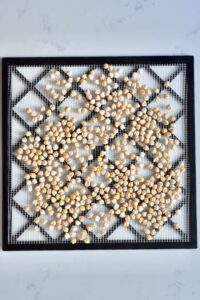
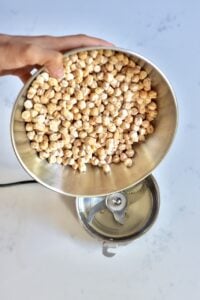
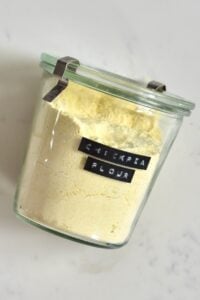









Hi there! I could have sworn I’ve visited this blog before but after going through
a few of the articles I realized it’s new to me.
Anyways, I’m certainly happy I found it and I’ll be bookmarking it and checking
back regularly!
😛 well I’m glad you’re enjoying it now and I hope you enjoy any recipes/DIY’s that you give a go!
Thank you! You’ve helped me resolve my dilemma as how dry the chickpeas have to be to make flour, very dry!
I rinsed and soaked a pound of chickpeas in filtered water with salt, overnight. After drying them on a dedicated bath towel for hours, I skinned each chickpea and halved them, I ended up with a quart plus of chickpeas, thinking it would blend easier. One and a half days later they are still damp. I assume they will be dried in two or three days. I’m retired so I have the time.
Thanks again,
Ella
Hi Ella,
Indeed the chickpeas could take a while to dry (dehydrate). When possible, I recommend using the oven or a dehydrator to speed up the process a bit. When just letting them air out, it’s best if you can place the tray in a well-ventilated area, if possible with some sunshine. I hope this helps.
Hello,
Thank you for sharing. This is great information. Can you advise what brand of chickpeas are organic that you prefer to use?
Best.
Hi,
I’m not sure I can recommend a specific brand. Depending on where you are based, there might be brands I don’t know. Maybe you could check reviews for brands that are available around you and find one that suits you that way 🙂
Can you use this recipe with canned beans. I have some I’m trying to use. I buy them for the aquafaba for drinks
Hi Alyssa,
You can make the chickpea flour only from dried chickpeas. To use the canned chickpeas, you can make hummus, add them to salads or mix them into soups and stews. Here are some links to recipes on the blog that use chickpeas:
https://www.alphafoodie.com/simple-creamy-homemade-hummus-recipe-faqs/
https://www.alphafoodie.com/simple-chickpea-pita-fatteh/
Hi. I love this will definitely try it out thanks for the detailed explanation. Do you ki d telling me the make of the grinder you used.
Hi Ifeoma. Thank you for your comment.
There is a link for this grain grinder in the Equipment section on the page of this recipe. It is also linked on the Shop page on the blog. Hope this helps.
I sprout the garbanzo beans first, then dried it in dehydrator before grinding it. Doing this, increased the nutritional bio available absorption and a more easy digestion.
Thank you so much for your comment, Jorge. My preferred method is also to soak them at least overnight 🙂
hey i’d love to try this sounds amazing, if i were to dry it outside do you know how long it would take or can i check that by its texture and looks ?
Hi Karen,
Unfortunately, I can’t tell you exactly how long it would take to dry it outside – it depends on the climate, humidity level, is there a lot of sunshine, etc. The chickpeas need to be completely dry before you grind them – they should look and feel dehydrated. As a reference, check the photos here on the blog post to see how mine looked.
I hope this helps.
I want to know if you can use canned chickpeas in liquid to make flour?
Hi Janabeth, Traditionally it’s made using the method I described. If you use canned chickpeas (these are normally precooked already and so dehydrating them will take a very long time).
Instead of soaking, how about just quickly but thoroughly rinsing them . Dry with towel then put in dehydrator to ensure full dryness. It cleans them but reduces the drying time.
Hi Edie,
Thank you for your comment. Indeed, if you buy organic or if you are pressed for time, you could quickly rinse and dry them. As mentioned in the blog post, if the chickpeas are organic (so no pesticides have been used), you could even directly grind them into flour. I do prefer the soaking method though, not just because it cleans the chickpeas thoroughly, but also because soaking them is said to increase their nutritional value and they also become easier to digest. I hope this helps.
Hi
can you freeze the chickpea flour and still use it for baking?
Hi Marie,
Yes, you can keep the chickpea flour in an airtight container in the freezer and then still use it for baking when needed. I hope this helps.
Hi, what kind of blender did you use?
Thanks
Hi Elizabeth,
I’ve used a spice grinder. I’ve linked it on my shop page.
If you have a high speed blender or a food processor, it should work to make the chickpea flour. Just please keep in mind that you might have to blend a smaller amount at a time or blend, sieve, then blend again any bigger bits so you can a fine powdery four. I hope you get to make it.
Do both recipes taste different ? Which one tastes better ?
Hi Heer,
My preferred method is to soak them first (especially since they’re not washed before they are dried) and I do have a slight preference for the taste of that flour – it tastes somehow fresher to me. Either way, both are very similar and if in a pinch, I would just grind the dried chickpeas.
I hope you give this recipe a try 🙂
This is awesome!! I love chickpea flour, and especially love the idea of soaking first!
Thanks so much Natalie, so glad you like this. It’s my preferred way to do chickpea flour! :).
Hello can I use chickpea flour into smoothies?thank u
Hi Caroline,
I personally would not! Chickpea flour is still uncooked flour. I would use it for baking mainly. Hope that helps!
If I use one pound of chickpeas, how much flour will that produce?
Hi Ryan
1 cup of chickpeas gives about 3/4 cups of chickpea flour. If 1 pound of chickpeas is said to be about 2 & 2/3 cups, then you would have almost 2 cups flour. I hope this helps.